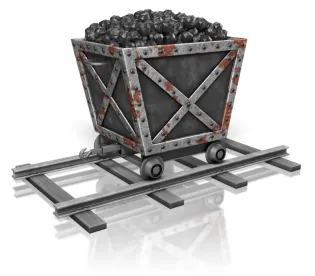The effective date of a Mine Safety and Health Administration rule requiring safety inspections of hardrock mines before workers begin their shifts will be delayed to October 2, 2017.
Previously, mine operators were allowed to conduct inspections during shifts, when MSHA officials said workers faced unsafe conditions.
The mine safety rule, first proposed on June 8, 2016, and published on January 23, 2017, was set to take effect on May 23, 2017.
On May 22, 2017, MSHA said that delaying the rule’s effective date would allow it additional time to provide compliance assistance to those affected by the regulation, including small mining companies. The agency said it needs additional time to conduct more outreach, develop compliance assistance, and train operators on the rule. Mining industry officials also said they need additional time to make new training, document revisions, and recordkeeping system changes. Under the rule, operators must inform miners of any safety or health hazards, immediately correct problems, and maintain records of their inspections.
MSHA Deputy Assistant Secretary of Labor Patricia W. Silvey said the agency is “committed to assuring that mine operators and miners affected by the examinations final rule have the training and compliance assistance they need prior to the rule’s effective date.”
The agency said, “As part of the outreach and compliance assistance process, MSHA would consider issues raised by stakeholders and consider further extending the effective date in order to determine if these issues can be reasonably addressed through compliance assistance and training.” MSHA said it also seeks comments regarding the appropriate length of the proposed extension.
In a March 27, 2017, notice, MSHA had proposed extending the deadline by two months to July 24, 2017.
MSHA said that almost 90 percent of metal and nonmetal mines are small operations with fewer than 20 employees, many in remote areas. Small mines “may have limited access or no access to the Internet at the mine site and may rely on stakeholder meetings and other MSHA in-person services to acquire the knowledge to comply with the rule.”
When it first proposed the rule, MSHA said it “believes that making and maintaining a record of adverse conditions found and corrective actions taken would help mine operators and miners and their representatives become more aware of potential dangers and more proactive in their approach to correcting these issues before they cause or contribute to an accident, injury, or fatality.”
In developing the proposed rule, MSHA said it reviewed accident investigation reports and the agency’s enforcement data from January 2010 through mid-December 2015. During this period, 122 miners were killed in 110 accidents at metal and nonmetal (M/NM) mines. The agency said it conducted investigations into each of these 110 fatal accidents and issued 252 citations and orders for violations of 95 different mandatory safety and health standards.
Accident investigations revealed that, in more than 60 percent of the fatal accidents (67 out of 110), MSHA had issued at least one citation or order for a violation of a mandatory safety or health standard identified in its Rules to Live By (RTLB) initiative, launched in February 2010. Violations of the 19 M/NM RTLB standards represent the conditions or practices that have been most frequently cited as causing or contributing to fatal accidents.




 />i
/>i

